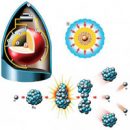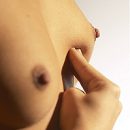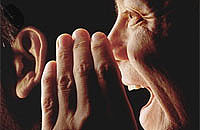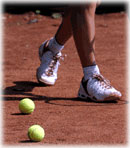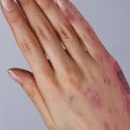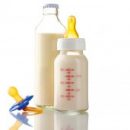"Tennis player's elbow" can be triggered by the most different accompanying diseases affecting, above all, on the exchange of connective tissue in the body. For example, caries, tonsillitis or cholecystitis provoke deterioration of collagen fibers, of which the tendon is.
Content
Mechanism for the development of the disease
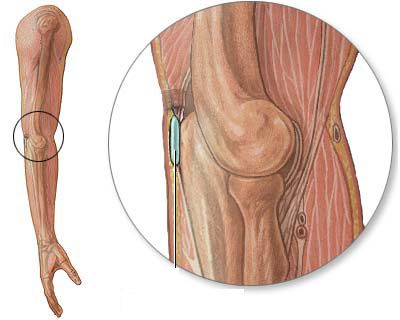 Professor Jack Harvey notes that the problem «Tennis» elbow is extremely difficult and currently poorly solvable. She, in turn, is associated with a very wide problem of adaptation of the connective tissue to modern household and production loads.
Professor Jack Harvey notes that the problem «Tennis» elbow is extremely difficult and currently poorly solvable. She, in turn, is associated with a very wide problem of adaptation of the connective tissue to modern household and production loads.
Before sports medicine is a very difficult task — help the binders and muscles athlete to withstand all overloads without any competitions. The mechanism of disease development is quite clear. In the most initial part of the tendons of muscle extensors and supinator (supinator — Muscle, rotating brush hands outward; Pronator's muscle rotates a brush of his hands inside) due to a significant voltage and vibration when hitting the racket on the ball arises inflammation and a small swelling. Inflammation of muscle attachments to the bone and causes acute and chronic pain and impossibility to fully blow.
There is also the opinion that at the time of contraction of the muscles, the tendons are infringed on the bone protrusion of the math around them by the aponeurosis, which leads to a violation of the circulation and the development of degenerative changes in the tendons. There is no pain in peace and appears only if the external supervision is tested and under certain movements — Explorement and supination of the forearm, especially when combining these movements (positive symptom fought). Flexing and Pronation of the forearm are usually painless. Passive movements (extension and supination) of the forearm are painful only with resistance. The pain is enhanced by compression of a brush in a fist and simultaneous bending in the ray-exclusive joint (symptom of Tompsen). Pain is usually a progressive nature, the most light movements produced with the participation of affected tendons become painful (for example, when an athlete keeps anything in a bent hand).
Manifestations
The main symptom of lateral epicondyl is pain, localized on the outside of the elbow. Pain can spread over the rear surface of the forearm and brushes and even reach the fingers. It may also be seen in palpation and stiffness of the muscles of the forearm. The pain is enhanced when the brush is extension, as well as when turning the forearm palm up. Holding in the hand of heavy items also enhances pain. For some patients due to increased pain even get from the refrigerator Milk package is a sufficient problem .
Diagnosis
At first, the doctor will find out detailed details of the history of your disease. You answer questions about the nature of pain, about the possible injuries of the elbow area in the past, as well as professional and sports loads. Physical research is a very important stage in the diagnosis of epicondylitis. Special diagnostic tests can be performed for the diagnosis of this disease;.
Perhaps you will be appointed X-ray study of the elbow joint. This will eliminate other diseases that manifest themselves in the elbow.
Symptoms of lateral epicondylitis are very similar to the symptoms of another disease, called radial tunnel syndrome. This disease is due to the squeezing of the radial nerve in the elbow area. If the pain does not decrease with the conservative treatment of epicondyl, the doctor may assign diagnostic studies to eliminate tunnel neuropathy.
With an unclear diagnosis, special research methods are prescribed. Magnetic resonance Tomography is a method for studying bones and soft tissues with magnetic waves. Ultrasound examination is based on the difference in reflection by tissues with different density and structure of ultrasonic signals generated by a special sensor. These methods of research are highly informative, completely safe and painless.
Epipudilite chronic. After a few weeks, and sometimes the sickness sickness and recovery, but under the condition of proper treatment and relative rest. However, when returning to intensive classes, the disease may resume. In some cases, the disease can last for several years.

